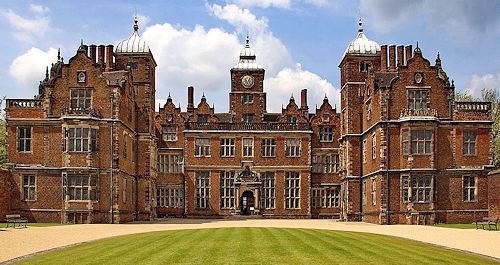history | not an easy book |
|
|
A comparison of the entrance fronts of Blenheim Palace and Holkham Hall illustrates the use of inflection on the exterior. Holkham Hall achieves an extensive whole through the addition of similar wholes which are always independent: most of its bays are pedimented pavilions which could.stand alone as single buildings--Holkham Hall could almost be three buildings in a row. Blenheim achieves a complex whole through fragmental parts, separate but inflected. The last two bays of the central block, when taken alone, are dualities incomplete in themselves. But in relation to the whole they become inflected terminations to the central pavilion, and a confirmation of the pedimented center of the whole composition. The piers at the corners of the porch and the broken pediments above them are also terminal inflections, similarly reinforcing the center. The bays at the far extremities of this enormous facade form pavilions which are not inflected. They are perhaps expressive of the relative independence of the kitchen and stable wings. Vanbrugh's method of creating a strong whole in such a large and diverse if symmetrical facade follows the traditional Jacobean method of the century before:
|
at Aston Hall the wings of the forecourt facade and the towers, parapeted pediments, and windows inflect in position and/or shape toward its center.
|
|
|
www.quondam.com/45/4507y.htm | Quondam © 2020.04.17 |


